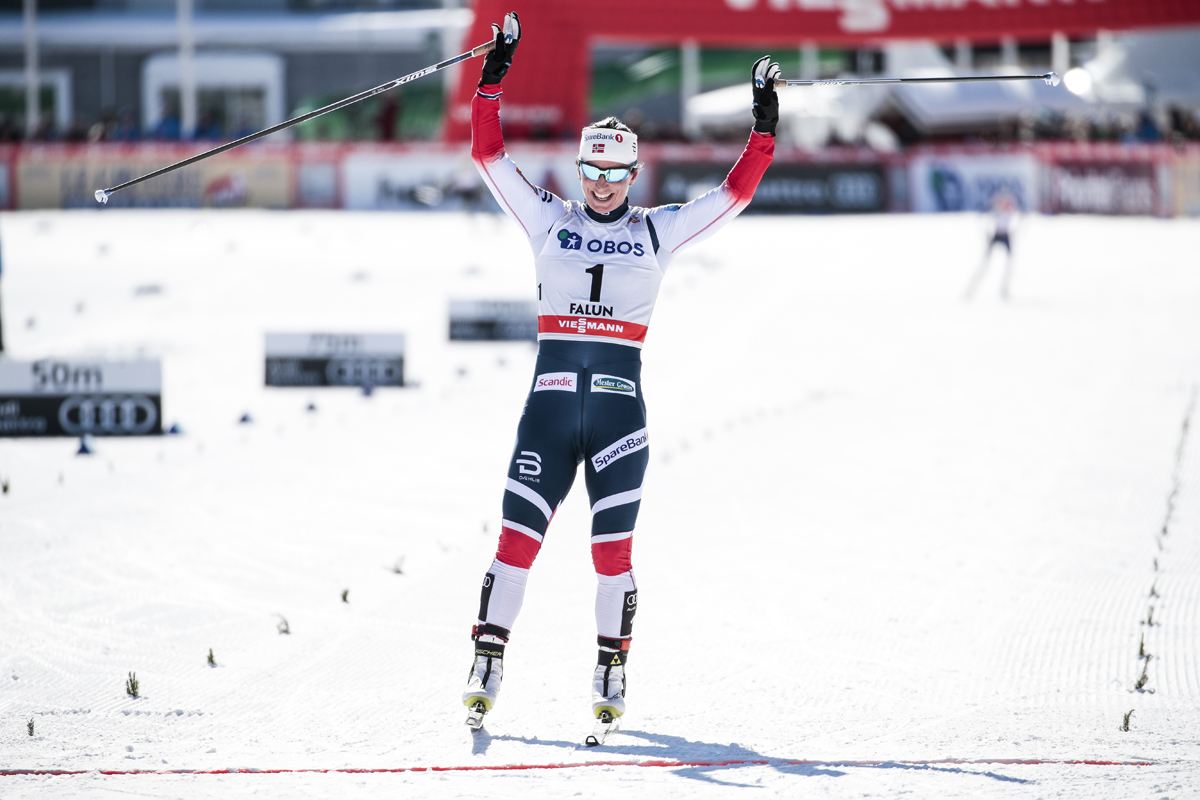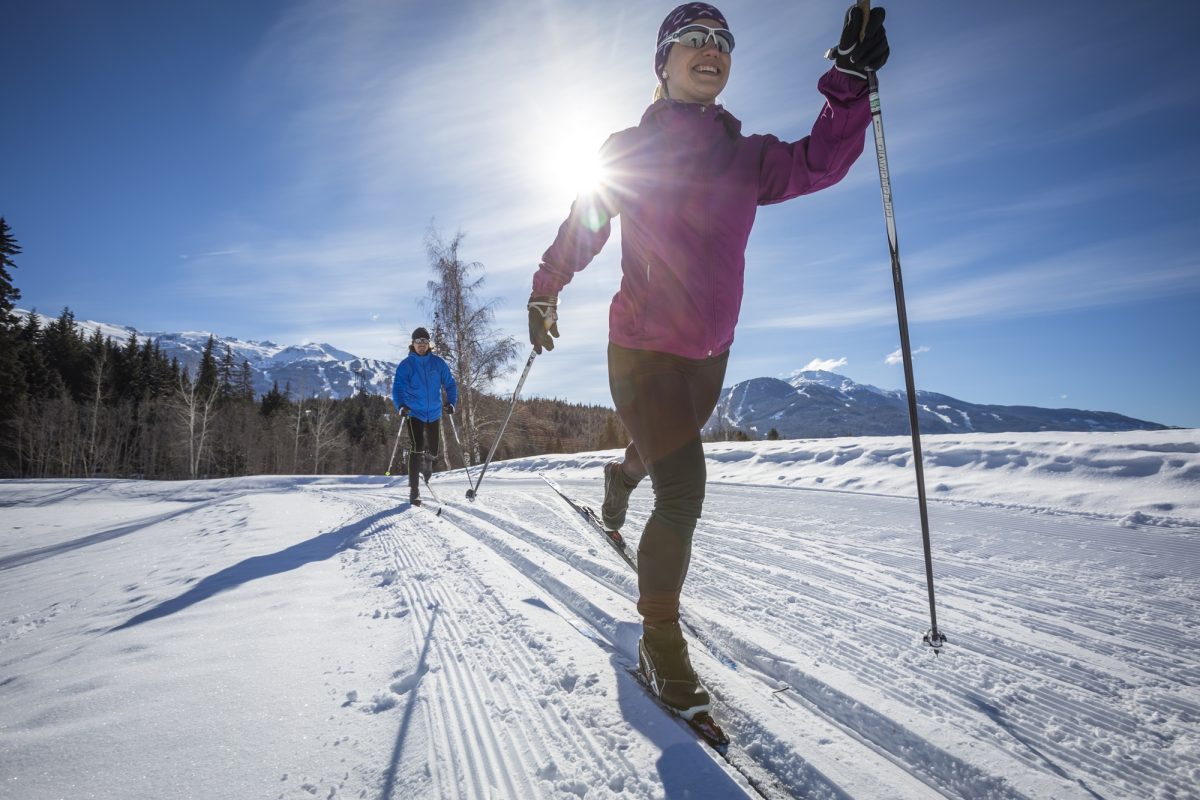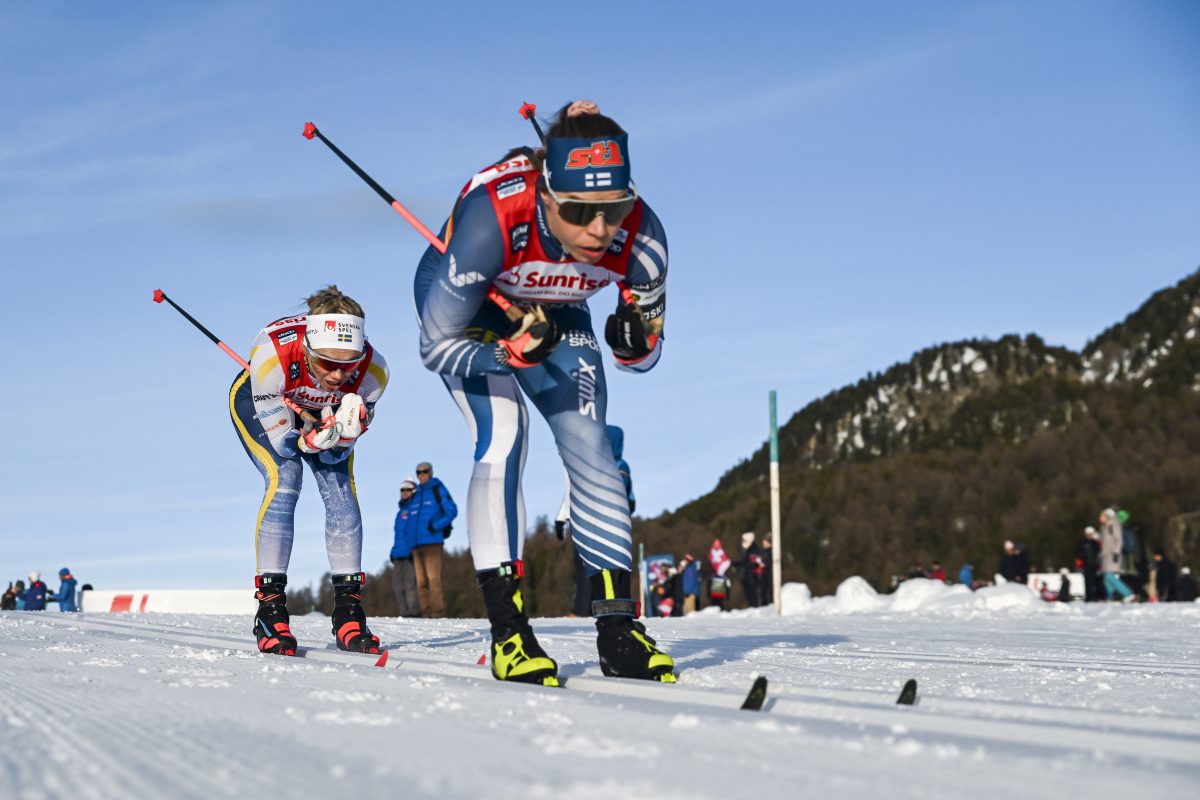Cross-country skiing has come a long way from a necessary travel method to an activity that millions of people worldwide enjoy. In the last century, the competitive nature of cross-country skiing has brought international recognition to athletes who traverse challenging terrain and cold weather to push themselves to the limit and connect with nature. This article explores the history of cross-country skiing and its development.

Norwegian Origins
There are some debates about the origins of cross-country skiing. Archaeological findings suggest the earliest equipment and records date back to 600 BC in China. However, many believe the Sami people of Norway, Sweden, Finland, and Russia were likely using skis for 6,000 years or more.
Cross-country skiing started as a form of transportation. Northern Europe’s cold, snowy climate required people to head into the mountains and woods to hunt animals and find firewood, which took considerable time and effort, especially when trudging through deep snow. Skis enabled travelers to glide along the snow, saving energy and time.
Depictions of early skiers also show distinct equipment setups. Drawings and descriptions of skiers and their methods suggest a transition to recreational skiing took place when older images featuring a spear eventually evolved into more recent examples showing two poles and a method for carrying items. Skis also changed over time, with skiers learning the benefits of a longer ski for gliding and a shorter ski with fur for traction, pushing off, and gaining speed.

Competitive Cross-Country Skiing
The Norwegian military popularized cross-country skiing as a sport. Army records from the 1700s show the first organized ski competitions taking place in Norway, in some cases, with prizes. The city of Tromsø hosted one of the first public cross-country competitions, which became big enough to attract the attention of a local newspaper reporter.
The country continued to build upon the athleticism and history of cross-country skiing with events like the Holmenkollen Ski Festival, which started in 1892. The festival brought the fun and competitive spirit of the sport with cross-country races and ski jumps to crowds of more than 10,000. Holmenkollen’s tradition continues, with the event gathering skiers from northern Europe every March.

Cross-country skiing gained traction in Europe in the 20th century. As France prepared for the first modern Winter Olympics in 1924, skiers formed a governing body for skiing called the International Ski Federation, or the FIS. Norway and Finland dominated the cross-country skiing event, while Switzerland, Finland, and France won medals in the military patrol event (now called the biathlon), which combines cross-country skiing and rifle target shooting. The first FIS competition occurred the following year and featured cross-country and Nordic combined races. The popularity of the events has grown to such an extent that the modern FIS World Cup regularly attracts wagers from the types of people who seek out promotions like the $200 free spin no deposit offer.
In 1932, Norway began hosting a ski race known as the Birkebeiner to commemorate a legendary rescue effort of two Norwegian soldiers who kept an infant prince safe from an ongoing civil war by skiing with the child through mountainous terrain. The modern race is about 33 miles, including a 12-mile climb, all done with a 7-pound backpack meant to represent the prince’s weight.
Meanwhile, the Arctic Circle Race may be one of the most extreme cross-country competitions. Featuring challenging terrain comprising steep descents and climbs, the race takes place over 100 miles in frigid temperatures in cities near Sisimiut, Greenland.

Modern Cross-Country Skiing and Techniques
Like many sports, cross-country skiers have developed techniques to maximize their athletic abilities. In previous centuries, skiers glided along with the classic method of skiing that closely resembles walking. In 1976, however, Bill Koch popularized the “skating” technique after becoming the first American to win a medal in the Olympic Games. As the name suggests, skate skiing looks more like the skier is skating on their skis by shifting their weight from side to side. For athletes who master skating, the speed difference is significant.
The new technique prompted controversy, as some professional skiers remained adamant that skating and skiing were not the same sport. Their perspective may be correct, as the two skiing styles require different kinds of skis. The skating method benefitted from a shorter ski with a narrow tip, while classic skis worked best with a longer base and broader head. Just a few years after Koch’s success, the Olympics separated the methods into two events and created a freestyle event for skiers who preferred skating.
Recent Ski History
Cross-country skiing has maintained a prominent international status. The 2018 Winter Olympic Games featured the team of Jessie Diggins and Kikkan Randall winning America’s first women’s gold medal in a sport traditionally dominated by northern Europe. Diggins became a national hero as she came from behind in the race’s final moments and won by less than a ski length.

Conclusion
What started as a way for northern Europeans to get around during snowy winters has become an international sport. Cross-country skiing remains a popular Olympic sport and tradition for many skiers who wish to brave the elements and enjoy the beauty of nature.
Press Release
Publishing press releases is a service we offer to the ski community, so please note these articles are not written by FasterSkier and therefore do not necessarily represent our thoughts and standards.



